Navigate the illuminating role of the new moon in biblical times, uncovering ancient practices and their enduring significance today.
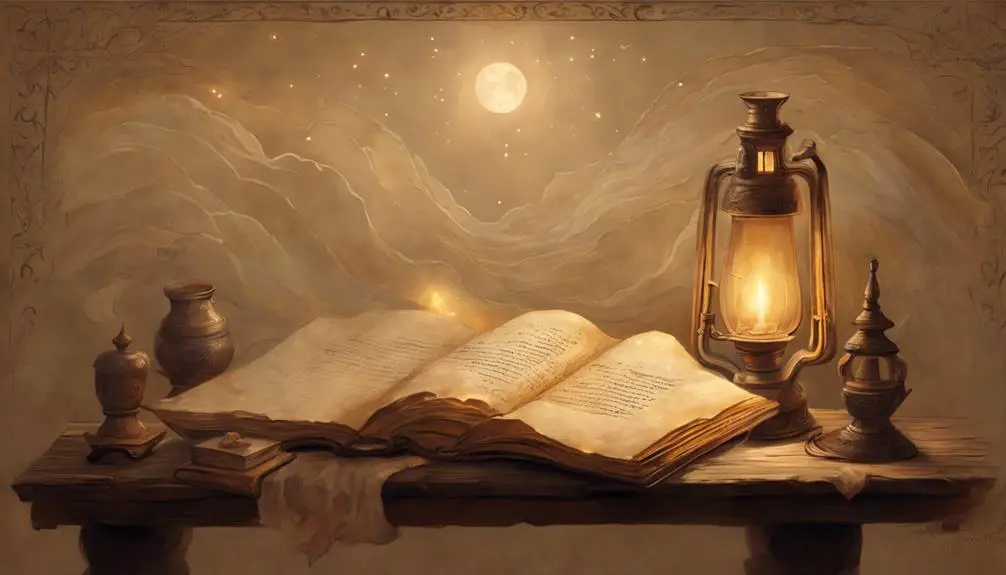
The New Moon in the Bible
The moon has been around since the dawn of time, but you'd be surprised at how pivotal its role is within the biblical narrative, especially when it comes to marking the new moon.
You'll find that the Bible isn't just a spiritual guide; it's also a historical document that sheds light on how ancient societies understood and celebrated the lunar cycle. Through examining biblical references to the new moon, alongside its significance in festivals and worship practices, you'll uncover layers of symbolism tied to renewal that are still relevant today.
But to grasp the depth of its impact, you must explore how these ancient observances compare to modern-day practices. Why does this matter, you ask? Let's uncover the significance together.
Key Takeaways
- The New Moon is pivotal for biblical timekeeping and religious ceremonies.
- It signifies renewal, purification, and the start of major festivals.
- Worship practices on the New Moon include sacrifices and communal prayers.
- Ancient and modern observances reflect its enduring spiritual significance.
Biblical References to the New Moon
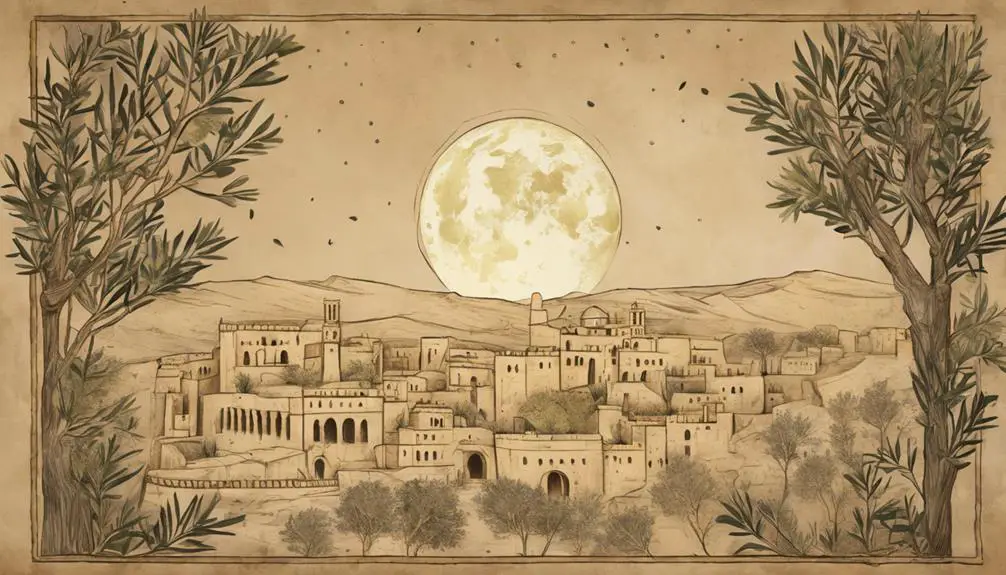
Throughout the Bible, the New Moon holds significant importance, serving as a marker for timekeeping, religious observances, and communal gatherings. Its recurrence, dictated by lunar cycles, offered an intrinsic method for ancient societies to structure time. Historical accounts within the biblical text underscore its role not merely as a celestial event but as a cornerstone in the fabric of societal rituals and the liturgical calendar.
You'll find that the Old Testament, in particular, references the New Moon in various contexts, highlighting its integral function in both daily life and spiritual practice. For instance, in the Book of Numbers, the New Moon is associated with specific offerings, indicating its ceremonial importance. This underscores an awareness and acknowledgment of lunar cycles that transcended mere observation, embedding these cycles deeply into the religious and cultural practices of the time.
The emphasis on the New Moon also reflects a broader understanding of the cosmos as interconnected with human activity. This perspective allowed ancient communities to align their lives with the rhythms of the natural world, marking time in a way that was both practical and meaningful. In this light, the New Moon wasn't just a phase in lunar cycles but a pivotal moment that oriented social and religious life, as narrated through historical accounts in the scriptures.
The New Moon and Festivals
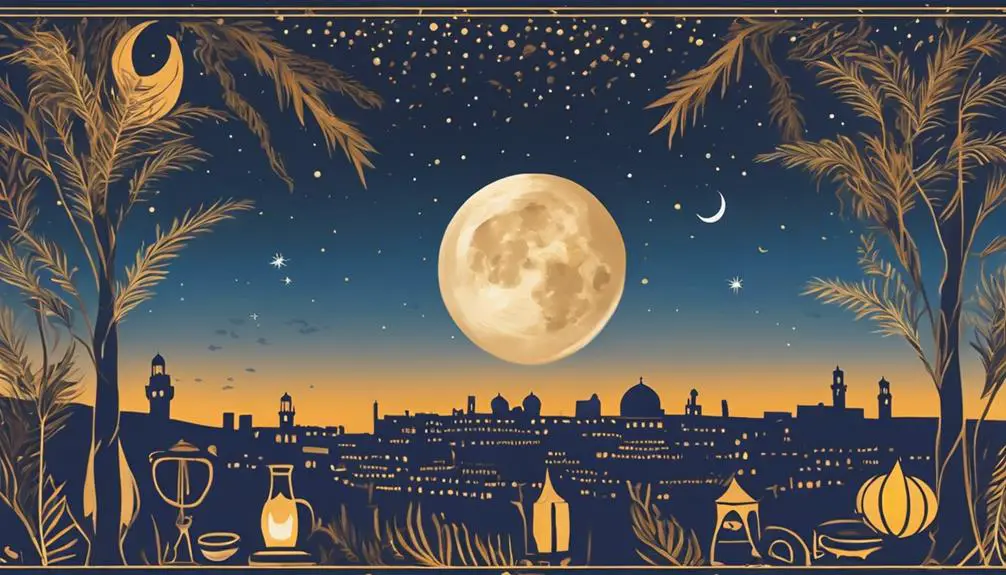
In examining the New Moon's role in biblical festivals, it's clear that this celestial event marked not only time but also symbolized renewal and purification within the community's spiritual life. The cyclical nature of moon phases played a pivotal role, intertwining with the cultural and religious fabric of the society. The New Moon's occurrence brought about a time for reflection, setting the stage for various festivals that were deeply embedded in the lives of the people.
Consider these points to understand the depth of the New Moon's influence:
- Initiation of Sacred Times: The sighting of the New Moon was the signal to begin major religious festivals, such as Passover and the Feast of Tabernacles, aligning spiritual observance with the natural lunar cycle.
- A Symbol of New Beginnings: Each New Moon offered a fresh start, an opportunity to cleanse from past misdeeds, echoing the theme of renewal and forgiveness.
- Cultural Variations: Different tribes and cultures within the biblical narrative observed the New Moon in unique ways, reflecting a rich tapestry of interpretations and customs.
- Unity and Community: The New Moon festivals served as communal gatherings, strengthening bonds and fostering a sense of belonging through shared rituals and celebrations.
Analyzing these aspects reveals how moon phases and cultural variations shaped the biblical conception of time, spirituality, and community life.
Worship Practices and the New Moon
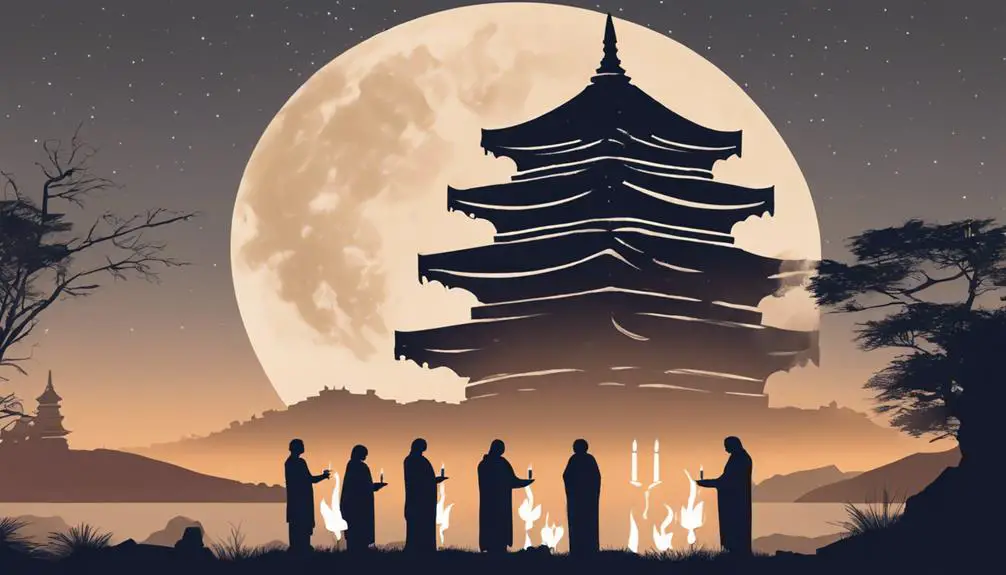
Building on the understanding of the New Moon's significance in biblical festivals, let's explore how these celestial events shaped specific worship practices. Central to these practices were moon sacrifices and lunar prohibitions, reflecting the New Moon's role in marking time and signifying renewal.
Moon sacrifices were integral, symbolizing dedication and thanksgiving to God at the beginning of each month. However, lunar prohibitions also played a vital role, dictating what could not be done during these times, such as certain types of work, to ensure the day remained holy and distinct from others.
Aspect |
Description |
Biblical References |
|---|---|---|
Moon Sacrifices |
Offerings made to honor the new lunar cycle. |
Numbers 28:11-15 |
Lunar Prohibitions |
Restrictions on activities to maintain the day's sanctity. |
Amos 8:5 |
Communal Gatherings |
Assembling for worship and reflection on the New Moon. |
Isaiah 66:23 |
Prayer and Reflection |
A time for personal and communal prayers. |
Psalm 81:3-5 |
This table encapsulates how the New Moon was not merely an astronomical event but a time rich with religious significance, guiding worship practices and societal rhythms.
Symbolism of Renewal
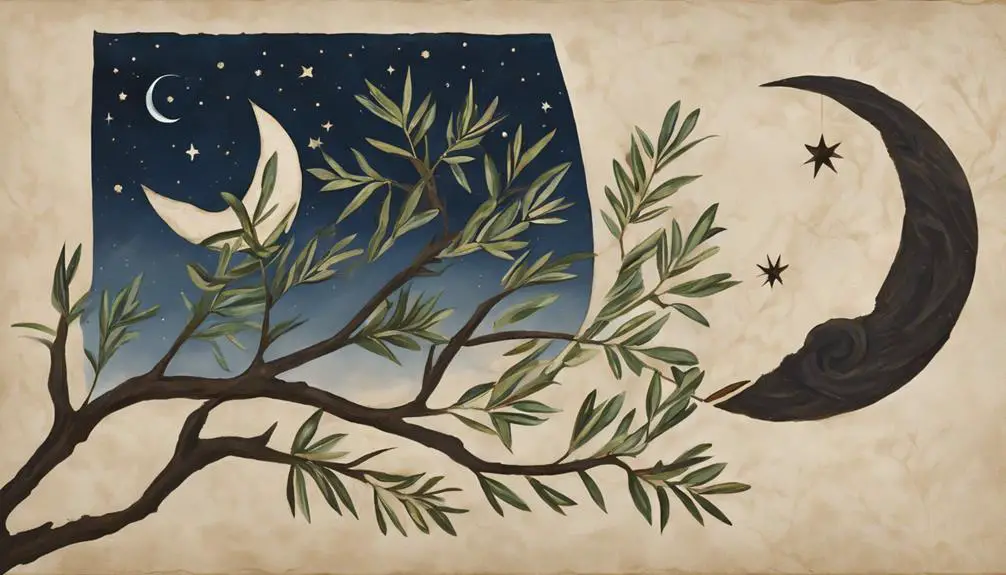
The New Moon's significance extends beyond its role in worship practices, symbolizing a profound sense of renewal and rebirth within the biblical narrative. This celestial event, recurring monthly, serves as a powerful metaphor for transformation and new beginnings, deeply rooted in lunar myths and cultural interpretations.
- A Time for Reflection: The New Moon invites you to pause, reflect, and set intentions for the coming cycle, embodying the biblical principle of self-examination and spiritual growth.
- Symbol of Cleansing: Just as the moon vanishes from sight and reemerges, it signifies the washing away of past errors and the opportunity for a clean slate, resonating with the biblical theme of redemption.
- Cycle of Life: The perpetual waxing and waning mirror life's own cycles, reminding you that after every end, there's a new beginning, echoing the biblical promise of hope and restoration.
- Connection to the Divine: The predictable yet mystical nature of the New Moon serves as a bridge between the earthly and the divine, highlighting the biblical narrative of God's faithfulness and the cyclical provision of opportunities for renewal.
In exploring the symbolism of renewal, the New Moon's role within the biblical context reveals a rich tapestry of lunar myths and cultural interpretations, offering deep insights into the human condition and the divine promise of regeneration.
Comparing Ancient and Modern Observances
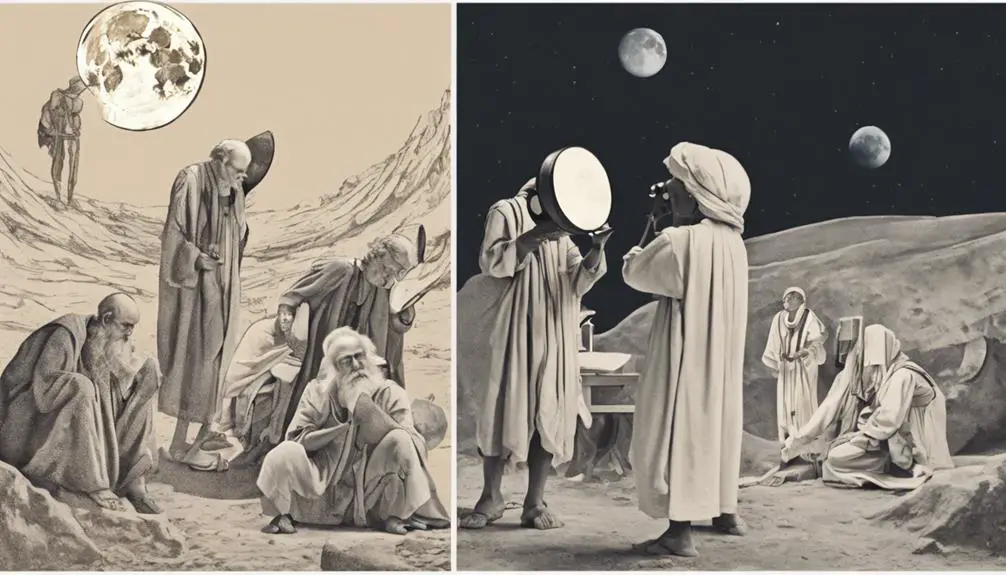
Reflecting on the observance of the New Moon, it's essential to compare how ancient practices contrast with modern celebrations to understand the evolution of this tradition. In ancient times, lunar calendars governed the synchronization of religious festivals, agricultural activities, and social events. These calendars, deeply rooted in the observation of the moon's phases, underscored the New Moon's significance in marking time and guiding spiritual and communal practices.
Today, while the reliance on lunar calendars has diminished due to the adoption of the solar Gregorian calendar, cultural adaptations have allowed the tradition of New Moon observance to persist, particularly within religious and spiritual communities. In Judaism, for instance, Rosh Chodesh remains a time for prayer, reflection, and renewal, echoing ancient customs. Meanwhile, in various spiritual circles, the New Moon is seen as a moment to set intentions, meditate, and connect with nature, showcasing a blend of ancient reverence with contemporary mindfulness practices.
This juxtaposition highlights not only the enduring significance of the New Moon across cultures but also the ways in which traditions adapt and survive through changing times. By examining these contrasts, you gain insight into the dynamic interplay between historical observances and their modern counterparts, revealing the resilience and evolution of cultural practices anchored in the lunar cycle.
Frequently Asked Questions
How Did Ancient Interpretations of the New Moon Differ Among Various Cultures Surrounding Israel, and What Influence, if Any, Did These Interpretations Have on Biblical Writings?
You're exploring how ancient cultures around Israel understood the new moon, focusing on ancient calendars and cultural rituals. These interpretations varied widely, from agricultural cycles to religious ceremonies.
Your investigation is crucial because it reveals the potential influences on biblical writings. By examining these ancient perspectives, you're not just learning about historical practices; you're uncovering how interconnected cultural beliefs shaped the spiritual landscape of the time, including the biblical context.
In Modern Scientific Terms, What Exactly Constitutes a New Moon, and How Does This Align or Conflict With the Biblical Understanding and Timing of the New Moon?
You're embarking on a journey through the cosmos, where lunar phases are your guide.
In modern scientific terms, a new moon marks the start of a lunar cycle, defined by precise astronomical calculations when the Moon aligns between Earth and the Sun, becoming invisible to us.
This scientific understanding, rooted in observation and calculation, may contrast with biblical timings and interpretations, inviting a fascinating dialogue between ancient texts and contemporary celestial knowledge.
Are There Any Lost or Lesser-Known Traditions Related to the New Moon That Were Practiced by Early Followers of the Bible but Have Since Faded From Mainstream Religious Observances?
You might be intrigued by ancient traditions linked to the lunar cycle that have lost prominence over time. Early communities, not just those following biblical teachings, often celebrated moon festivals and aligned their agricultural practices with the lunar phases, known as lunar agriculture.
These customs were deeply intertwined with their spiritual and daily lives, providing a rhythm to agricultural and communal activities. Today, these practices have largely faded, overshadowed by more contemporary observances and technological advancements.
How Do Contemporary Theologians Reconcile Discrepancies Between the Lunar Calendar, Which Includes the New Moon, and the Solar Calendar Used Today, Especially in the Context of Biblical Prophecy and Eschatology?
You're navigating a sea where calendar synchronization serves as your compass, guiding through the waves of prophecy interpretation.
Contemporary theologians use this tool to reconcile the lunar and solar calendars, especially within biblical prophecy and eschatology. They delve into the complexities of time measurement, ensuring that ancient texts align with today's understanding.
It's an analytical journey, contextual and scholarly, where every discovery sheds light on interpretations long debated.
What Role Does the New Moon Play in Interfaith Dialogue, Especially Between Judaism, Christianity, and Islam, Given Its Significance in All Three Religions but With Differing Theological Implications and Observances?
You're exploring how the New Moon festivals serve as a bridge in interfaith dialogue among Judaism, Christianity, and Islam.
Despite their differing theological implications and observances, these festivals offer a unique platform for cultural exchanges.
They allow communities to share, learn, and understand each other's traditions and beliefs.
This sharing fosters a deeper respect and appreciation, highlighting the role of celestial events in uniting diverse religious beliefs through common observances.
Conclusion
In a twist of irony, despite the advanced technology and scientific understanding at our fingertips today, the ancient observances of the new moon in the Bible still resonate profoundly.
As you've explored, the biblical references, festivals, and worship practices tethered to the new moon offer a timeless symbol of renewal that challenges our modern perceptions.
It's a stark reminder that sometimes, in our quest for progress, we circle back to the wisdom of the past, finding relevance in traditions we thought we'd eclipsed.


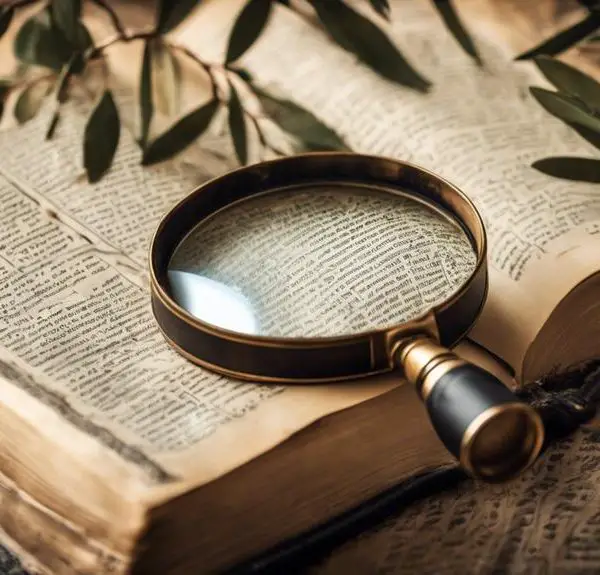
Sign up